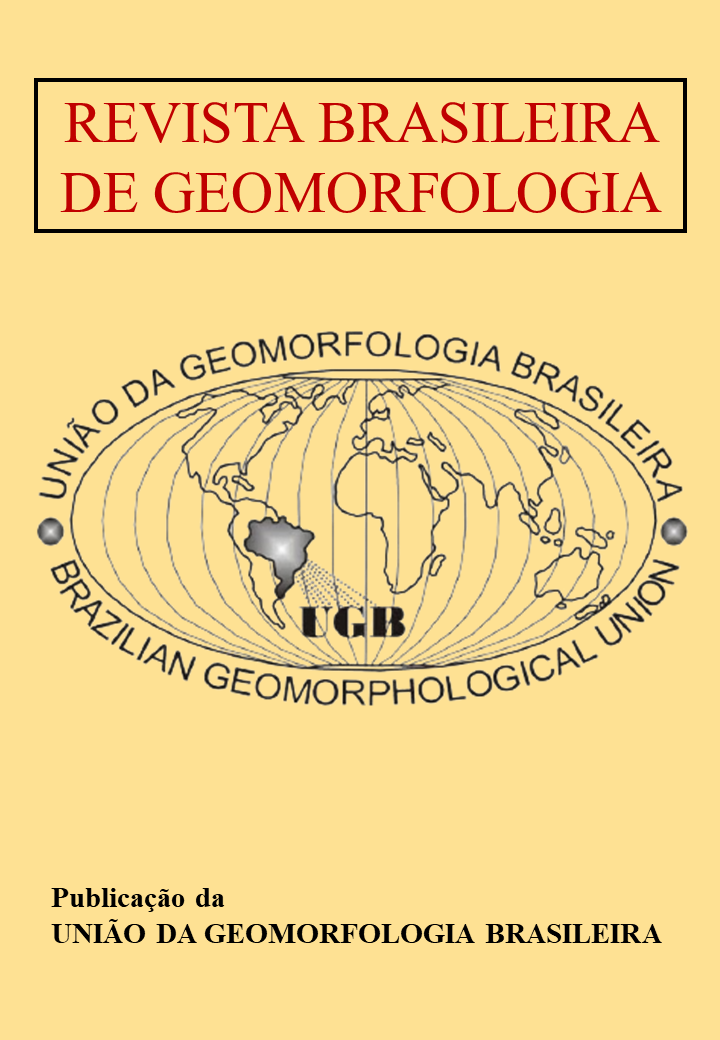Relationship between soil, relief, and parental material in the Devonian Escarpment – Ponta Grossa – Southern Brazil
DOI:
https://doi.org/10.20502/rbg.v26i2.2664Palavras-chave:
Geomorfologia, Solos, Morfopedologia, Escarpa DevonianaResumo
The Devonian Escarpment (South Brazil) has developed in a very peculiar area, in the transition between the First (basement) and Second (Paraná Sedimentary Basin) Paranaense Plateaus. Considering this complex geological-geomorphological framework, this study aims to understand the relationship between soil, relief, and lithology in a sector of this area, in Ponta Grossa (Paraná State). Together with geological information, Copernicus elevation data were interpreted in order to divide the study area into morphopedological units, for which the probable soil cover could be inferred. Subsequently, field work was carried out to describe soil profiles and collect samples to perform granulometric and chemical analyses. On the top of the Second Plateau, Neossolos Litólicos Húmicos and Hísticos [Leptosols (Histic, Humic)] dominate due to the presence of headwaters and closed depressions, whose origin is related to mineral dissolution caused by organic acids. Cambissolos Háplicos [Cambisols] and Latossolos Vermelho-Amarelos [Clayic Ferralsols (Ferritic, Rhodic)] occur in interfluves where there are no headwaters and closed depressions. In the First Plateau, Argissolos Vermelho-Amarelos [Acrisols (Ferric)] associated with Cambissolos Háplicos [Cambisols] dominate on the slopes, while in the flat-bottomed valleys, Gleissolos Háplicos [Gleysols] associated with Cambissolos Háplicos [Cambisols] occur. In the Escarpment Front, Neossolos Litólicos [Loamic Leptosols (Cambic)] with low concentration of organic matter dominate over metamorphic rocks due to the presence of very steep relief.
Downloads
Downloads
Publicado
Como Citar
Edição
Seção
Licença

Este trabalho está licenciado sob uma licença Creative Commons Attribution-NonCommercial 4.0 International License.
Autor(es) conservam os direitos de autor e concedem à revista o direito de primeira publicação, com o trabalho simultaneamente licenciado sob a Licença Creative Commons Attribution que permite a partilha do trabalho com reconhecimento da autoria e publicação inicial nesta revista.










